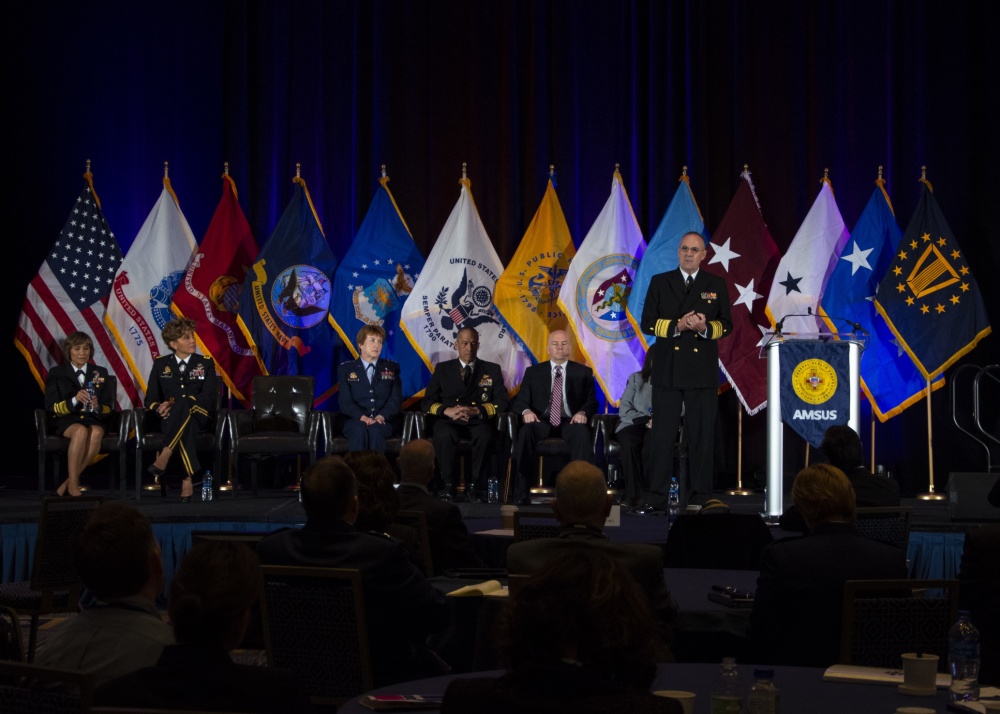
Navy surgeon general discusses DHA transition

Vice Adm. Forrest Faison, Navy surgeon general and chief, U.S. Navy Bureau of Medicine and Surgery, spoke about the future of Navy Medicine with military and civilian medical professionals Nov. 29 during the 127th Annual AMSUS Meeting for Federal Health Professionals at the Gaylord National Resort and Convention Center, Maryland.
NATIONAL HARBOR, Md. — On Thursday, Nov. 29, Vice Adm. Forrest Faison, Navy surgeon general and chief, U.S. Navy of Bureau of Medicine and Surgery came together with military medicine leaders during AMSUS for a panel discussion on the future of the services as they begin to transition medical facilities to the Defense Health Agency.
On Oct. 1, 2018 Navy Medicine began phase one of the DHA transition, transferring Naval Hospital Jacksonville administration, management and control to the DHA. While this transition presents significant change for Navy Medicine, the mission to keep Sailors, Marines and their families healthy and ready does not.
“The Navy is taking advantage of the many opportunities that come with this transformation. It allows us to focus on our true north and ensure we’re doing all we can to save lives and return sons and daughters home to their families” said Faison.
Several transition initiatives and milestones were shared by the services, yet the recurring theme throughout the panel’s discussion revolved around the importance of readiness.
Faison went on to describe the unique ways in which Navy Medicine is supporting the transition and taking steps to maintain readiness as hospitals and clinics transition administration, management and control to the DHA. For patients, these reforms should have little or no effect on their experience, facility and physicians. Coverage will remain the same, and patients will continue to receive the same exceptional level of care and service.
“We are focused on a future of design, not default,” said Faison. To complement changes in the organizational construct of the DHA, Navy Medicine will establish Readiness and Training Commands that support the Navy’s mission and the DHA’s role of administration and management of the MTFs.
“The Navy Medicine Readiness and Training Commands will focus on platform readiness and training so that beneficiaries can continue to receive the same level of care,” said Faison.
While the transition itself presents a great amount of change, the evolving future of warfare and health care will also continue to drive changes in the way the Navy delivers care. The emergence of great power competition and the growing capabilities of near-peer competitors to project seapower could indicate the next war at sea.
“If you’re going to fight tonight, you’ve got to be able to save lives tonight,” Faison said. “Every mom and dad in America is depending on us to do that.”
As the transition continues and the warfighting environment evolves, Navy Medicine will adapt and provide the necessary functions and capabilities needed to fight the next fight, whether it be on sea, land or in the air.
Disclaimer: Re-published content may have been edited for length and clarity. Read original post.





















.png)









No hay comentarios:
Publicar un comentario